The Influence of Ultrasonic Vibration Frequency on the Properties of TiN Coated Biomedical Ti–13Zr–13Nb
Abstract
:1. Introduction
2. Materials and Methods
3. Results and Discussion
4. Conclusions
- Ultrasonic frequency effects on TiN coating properties after subjected with ultrasonic treatment were noted: as the ultrasonic frequency increased, the more intense the coating deformation, the less the number of microdroplets, the less the coating thickness, and the higher the coating’s hardness.
- It was found that the corrosion properties of the TiN coating significantly improved after treated with ultrasonic vibrations. It seems that the ultrasonic vibration was able to deform the coating and fill up the pinholes thus improving the corrosion resistance of the coated sample. Charge transfer resistance and current density increased from 2816 to 3766 and 0.261 to 0.185, respectively, when the ultrasonic frequency increased. This indicates that there was less penetration from the simulated body fluids into the coating due to the compactness of the coating properties created at extreme conditions using the ultrasonic treatment.
Author Contributions
Acknowledgments
Conflicts of Interest
References
- Gonzalez, E.D.; Afonso, C.R.M.; Nascente, P.A.P. Influence of Nb content on the structure, morphology, nanostructure, and properties of titanium-niobium magnetron sputter deposited coatings for biomedical applications. Surf. Coat. Technol. 2017, 326, 424–428. [Google Scholar] [CrossRef]
- Wang, P.; Wu, L.; Feng, Y.; Bai, J.; Zhang, B.; Song, J.; Guan, S. Microstructure and mechanical properties of a newly developed low young’s modulus Ti–15Zr–5Cr–2Al biomedical alloy. Mater. Sci. Eng. C 2017, 72, 536–542. [Google Scholar] [CrossRef] [PubMed]
- Abboud, J.H. Effect of processing parameters on titanium nitrided surface layers produced by laser gas nitriding. Surf. Coat. Technol. 2013, 214, 19–29. [Google Scholar] [CrossRef]
- Ohtsu, N.; Nakamura, Y.; Semboshi, S. Thin hydroxyapatite coating on titanium fabricated by chemical coating process using calcium phosphate slurry. Surf. Coat. Technol. 2012, 206, 2616–2621. [Google Scholar] [CrossRef]
- Zhao, B.H.; Zhang, W.; Wang, D.N.; Feng, W.; Liu, Y.; Lin, Z.; Du, K.Q.; Deng, C.F. Effect of Zn content on cytoactivity and bacteriostasis of micro-arc oxidation coatings on pure titanium. Surf. Coat. Technol. 2012, 228, S428–S432. [Google Scholar] [CrossRef]
- Wu, J.; Li, H.; Yuan, B.; Gao, Y. High recoverable strain tailoring by Zr adjustment of sintered Ti–13Nb–(0–6)Zr biomedical alloys. J. Mech. Behav. Biomed. 2017, 75, 574–580. [Google Scholar] [CrossRef] [PubMed]
- Xiao, M.; Chen, Y.M.; Biao, M.N.; Zhang, X.D.; Yang, B.C. Bio-functionalization of biomedical metals. Mater. Sci. Eng. C 2017, 70, 1057–1070. [Google Scholar] [CrossRef] [PubMed]
- Shah, A.; Izman, S.; Abdul-Kadir, M.R.; Ayu, H.M.; Anwar, M.; Ma’aram, A. Influence of bias voltage on corrosion resistance of TiN coated on biomedical TiZrNb alloy. Adv. Mater. Res. 2014, 845, 436–440. [Google Scholar] [CrossRef]
- Geetha, M.; Singh, A.K.; Asokamani, R.; Gogia, A.K. Ti based biomaterials, the ultimate choice for orthopaedic implants—A review. Prog. Mater. Sci. 2009, 54, 397–425. [Google Scholar] [CrossRef]
- Mohan, L.; Anandan, C.; Grips, V.K.W. Corrosion behavior of titanium alloy Beta-21s coated with diamond like carbon in Hank’s solution. Appl. Surf. Sci. 2012, 258, 6331–6340. [Google Scholar] [CrossRef]
- Shah, A.; Izman, S.; Fasehah, S.N. Study on micro droplet reduction on TiN coated biomedical Ti–13Zr–13Nb alloy. J. Teknol. 2016, 78, 1–5. [Google Scholar] [CrossRef]
- Shah, A.; Izman, S.; Hassan, M.A. Influence of nitrogen flow rate in reducing TiN microdroplets on biomedical Ti–13Zr–13Nb alloy. J. Teknol. 2016, 78, 6–10. [Google Scholar] [CrossRef]
- Shah, A.; Izman, S.; Abdul-Kadir, M.R.; Mas-Ayu, H. Influence of substrate temperature on adhesion strength of TiN coating of biomedical Ti–13Zr–13Nb alloy. Arab. J. Sci. Eng. 2017, 42, 4737–4742. [Google Scholar] [CrossRef]
- Shah, A.; Izman, S.; Ismail, S.N.F.; Mas-Ayu, H.; Daud, R. Study on adhesion strength of TiN coated biomedical Ti–13Zr–13Nb alloy. J. Teknol. 2018, 80, 27–35. [Google Scholar] [CrossRef]
- Hongxi, L.; Qian, X.; Xiaowei, Z.; Chuanqi, W.; Baoyin, T. Wear and corrosion behaviors of Ti6Al4V alloy biomedical materials by silver plasma immersion ion implantation process. Thin Solid Films 2012, 521, 89–93. [Google Scholar] [CrossRef]
- Sathish, S.; Geetha, M.; Aruna, S.T.; Balaji, N.; Rajam, K.S.; Asokamani, R. Sliding wear behavior of plasma sprayed nanoceramic coatings for biomedical applications. Wear 2011, 271, 934–941. [Google Scholar] [CrossRef]
- Ayu, H.M.; Izman, S.; Daud, R.; Krishnamurithy, G.; Shah, A.; Tomadi, S.H.; Salwani, M.S. Surface Modification on CoCrMo Alloy to Improve the Adhesion Strength of Hydroxyapatite Coating. Procedia Eng. 2017, 184, 399–408. [Google Scholar] [CrossRef]
- Mas Ayu, H.; Izman, S.; Daud, R.; Shah, A.; Anwar, M.; Krishnamurithy, G.; Kamarul, T. In Vitro biocompatibility study of hydroxyapatite coated on Co-Cr-Mo with oxide interlayer. J. Teknol. 2018, 80, 35–42. [Google Scholar] [CrossRef]
- Raoufi, M.; Mirdamadi, S.; Mahboubi, F.; Ahangarani, S.; Mahdipoor, M.S.; Elmkhah, H. Effect of active screen plasma nitriding pretreatment on wear behavior of TiN coating deposited by PACVD technique. Appl. Surf. Sci. 2012, 258, 7820–7825. [Google Scholar] [CrossRef]
- Izman, S.; Shah, A.; Abdul-Kadir, M.R.; Nazim, E.M.; Anwar, M.; Hassan, M.A.; Safari, H. Effect of thermal oxidation temperature on rutile structure formation of biomedical TiZrNb alloy. Adv. Mater. Res. 2012, 393, 704–708. [Google Scholar] [CrossRef]
- Mas-Ayu, H.; Izman, S.; Abdul-Kadir, M.R.; Daud, R.; Shah, A.; Yusoff, M.F.M.; Shamsiah, M.W.; Yong, T.M.; Kamarul, T. Influence of carbon concentrations in reducing Co and Cr ions release in cobalt based implant: A preliminary report. Adv. Mater. Res. 2014, 845, 462–466. [Google Scholar] [CrossRef]
- Subramanian, B.; Jayachandran, M. Electrochemical corrosion behavior of magnetron sputtered TiN coated steel in simulated bodily fluid and its hemocompatibility. Mater. Lett. 2008, 62, 1727–1730. [Google Scholar] [CrossRef]
- Ali, A.; Ahmad, A.; Deen, K.M. Multilayer ceramic coating for impeding corrosion of sintered NdFeB magnets. J. Rare Earths 2009, 27, 1003–1007. [Google Scholar] [CrossRef]
- Tian, R. Chromium Nitride/Cr coated 316l stainless steel as bipolar plate for proton exchange membrane fuel cell. J. Power Sources 2011, 196, 1258–1263. [Google Scholar] [CrossRef]
- Bobzin, K.; Bagcivan, N.; Theiß, S.; Weiß, R.; Depner, U.; Troßmann, T.; Ellermeier, J.; Oechsner, M. Behavior of DLC coated low-alloy steel under tribological and corrosive load: Effect of top layer and interlayer variation. Surf. Coat. Technol. 2013, 215, 110–118. [Google Scholar] [CrossRef]
- Mutyala, K.C.; Ghanbari, E.; Doll, G.L. Effect of deposition method on tribological performance and corrosion resistance characteristics of CrXn coatings deposited by physical vapor deposition. Thin Solid Films 2017, 636, 232–239. [Google Scholar] [CrossRef]
- Zhang, B.; Wei, L.; Gao, L.; Guo, H.; Xu, H. Microstructural characterization of PS-PVD ceramic thermal barrier coatings with quasi-columnar structures. Surf. Coat. Technol. 2017, 311, 199–205. [Google Scholar] [CrossRef]
- Rodríguez-Barrero, S.; Fernández-Larrinoa, J.; Azkona, I.; López De Lacalle, L.N.; Polvorosa, R. Enhanced performance of nanostructured coatings for drilling by droplet elimination. Mater. Manuf. Process. 2016, 31, 593–602. [Google Scholar] [CrossRef]
- Celaya, A.; De Lacalle, L.N.L.; Campa, F.J.; Lamikiz, A. Ultrasonic assisted turning of mild steels. Int. J. Mater. Prod. Technol. 2010, 37, 60–70. [Google Scholar] [CrossRef]
- Suresh, K.S.; Geetha, M.; Richard, C.; Landoulsi, J.; Ramasawmy, H.; Suwas, S.; Asokamani, R. Effect of equal channel angular extrusion on wear and corrosion behavior of the orthopedic Ti–13Nb–13Zr alloy in simulated body fluid. Mater. Sci. Eng. C 2012, 32, 763–771. [Google Scholar] [CrossRef]
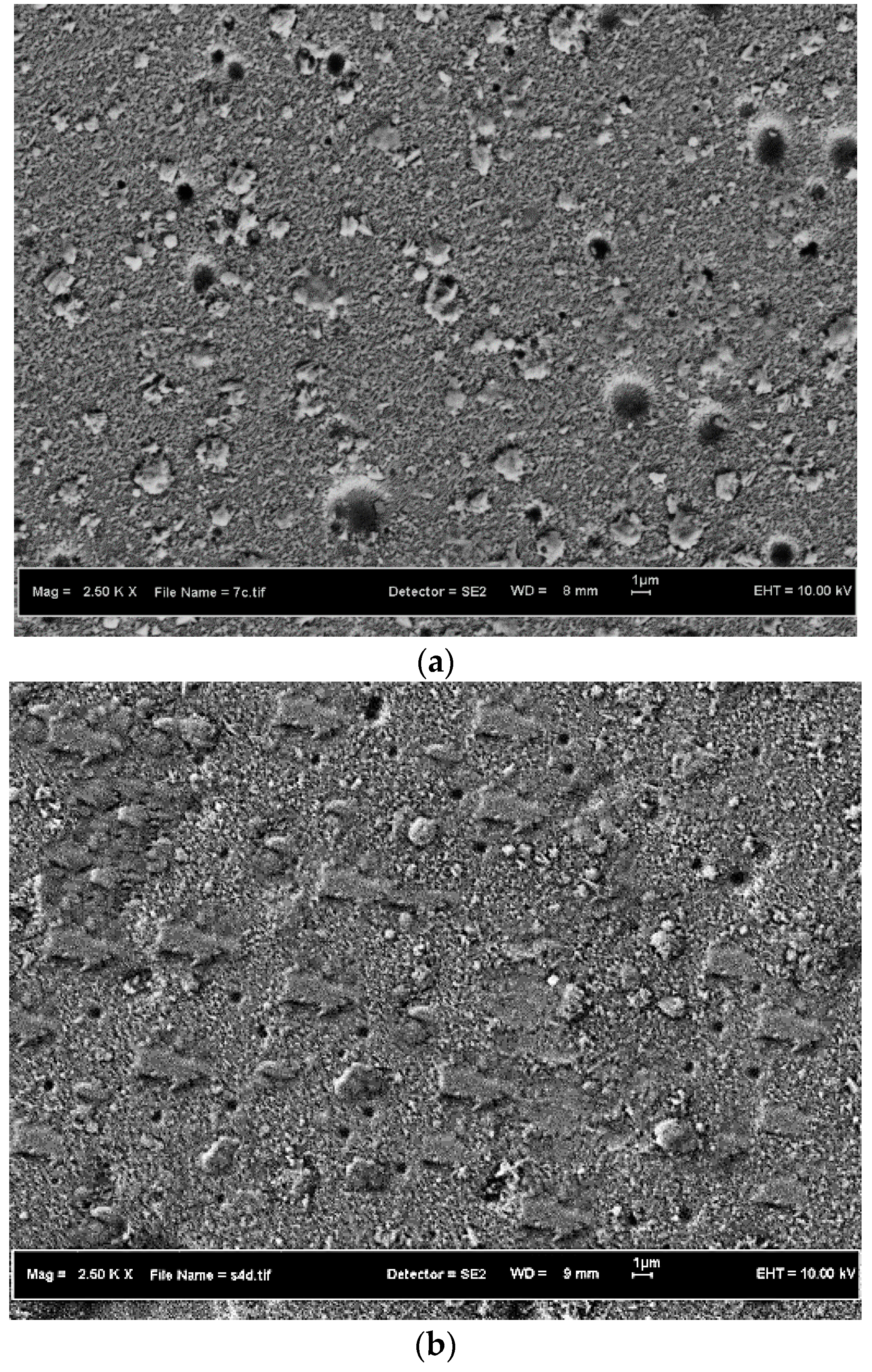
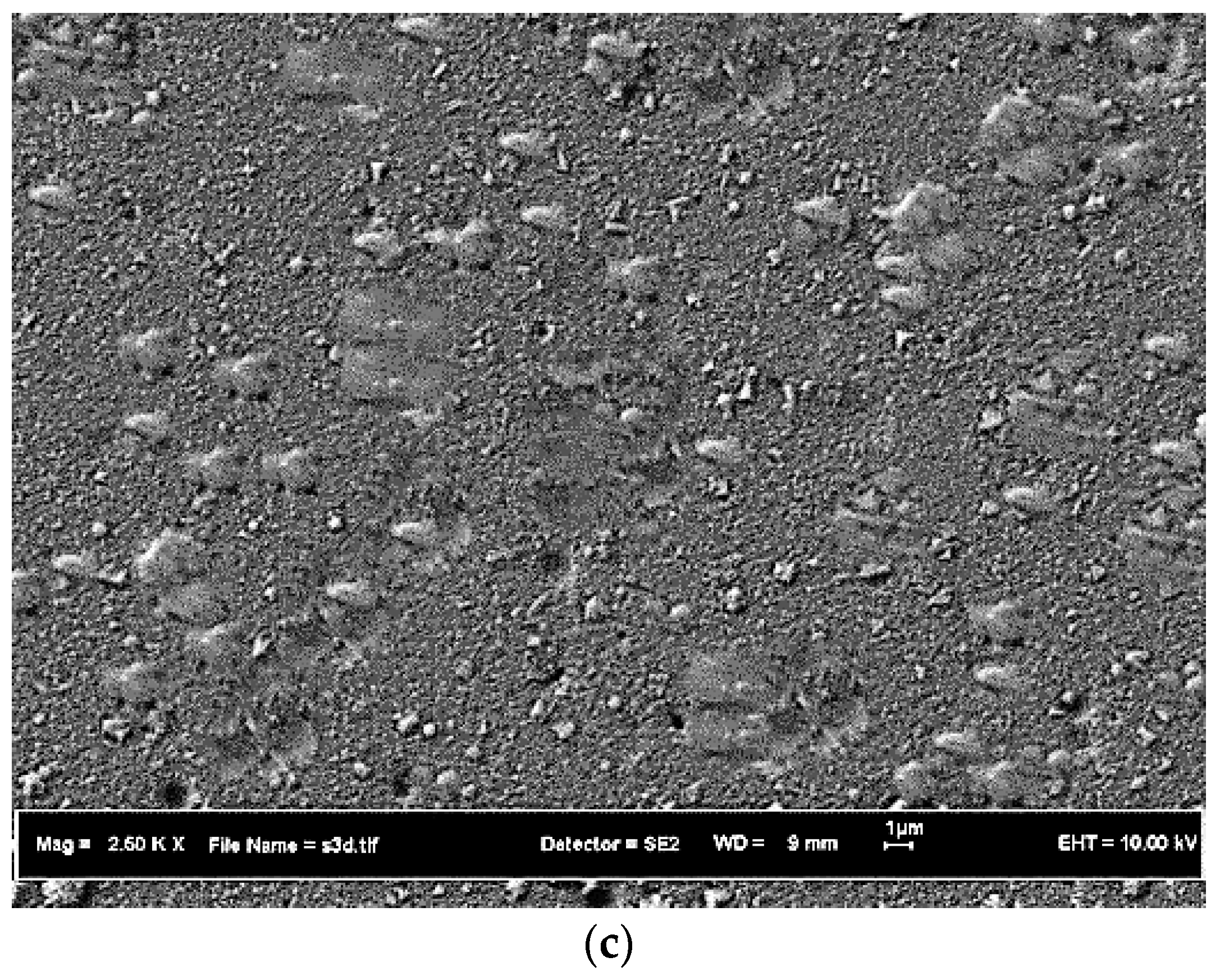
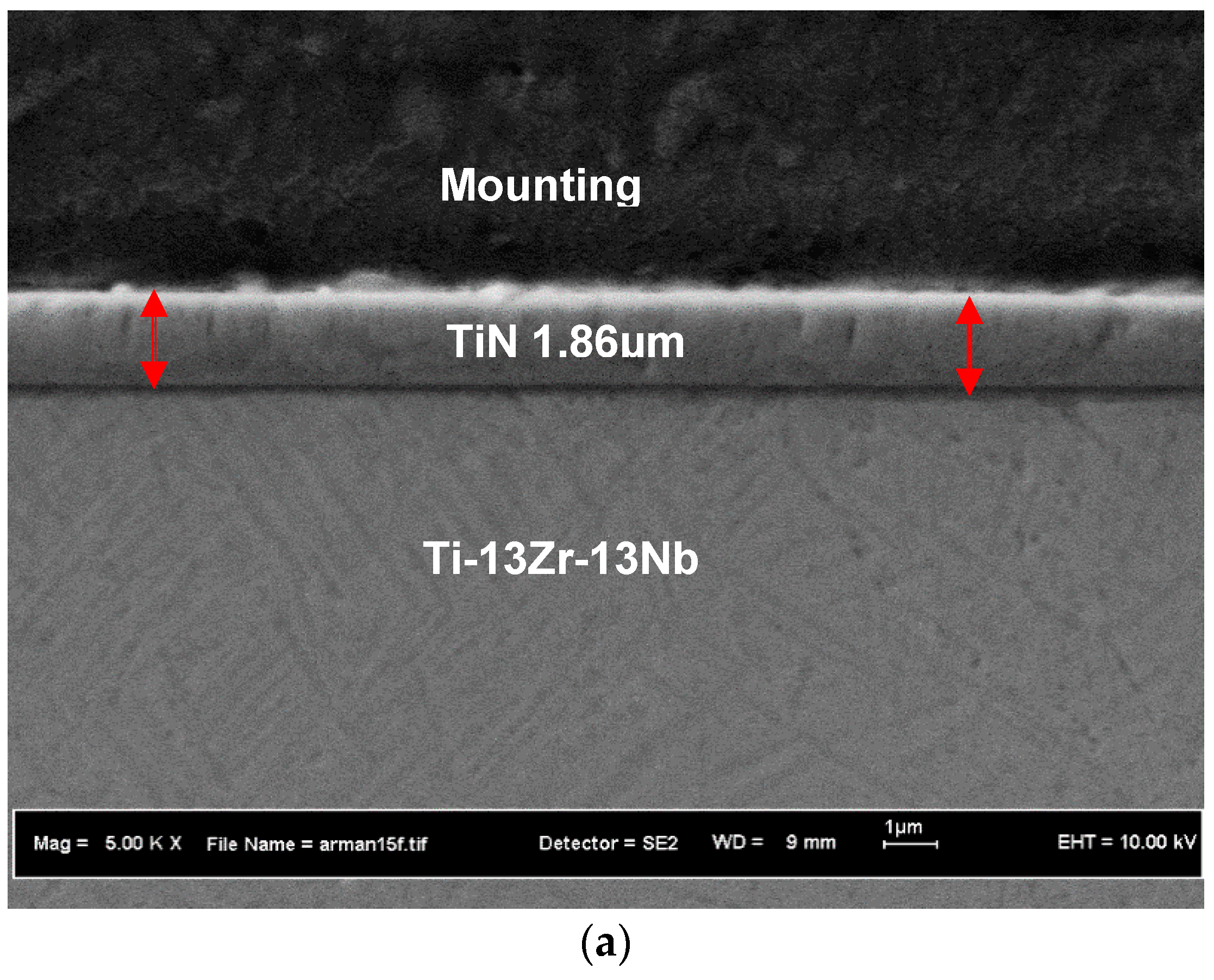

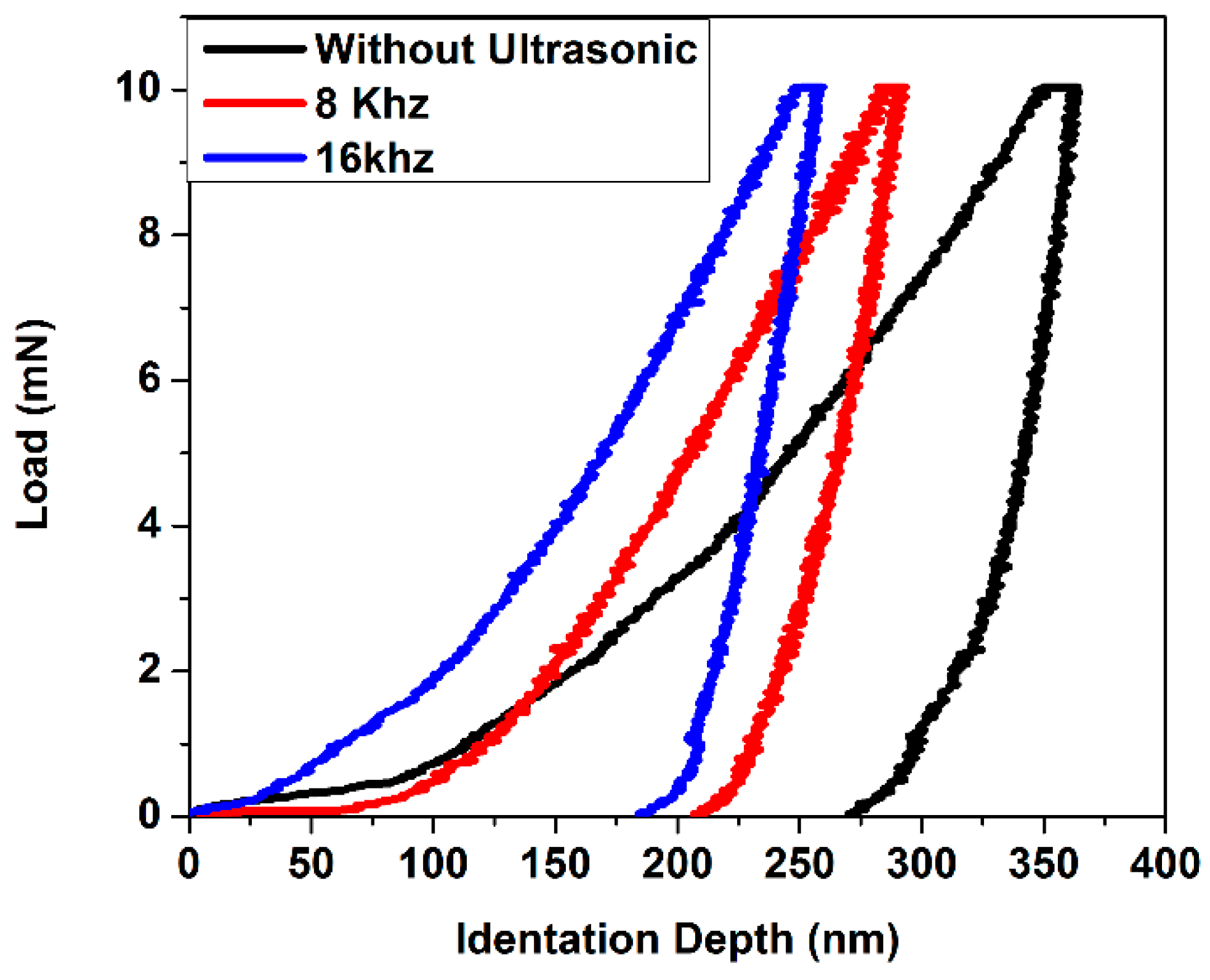

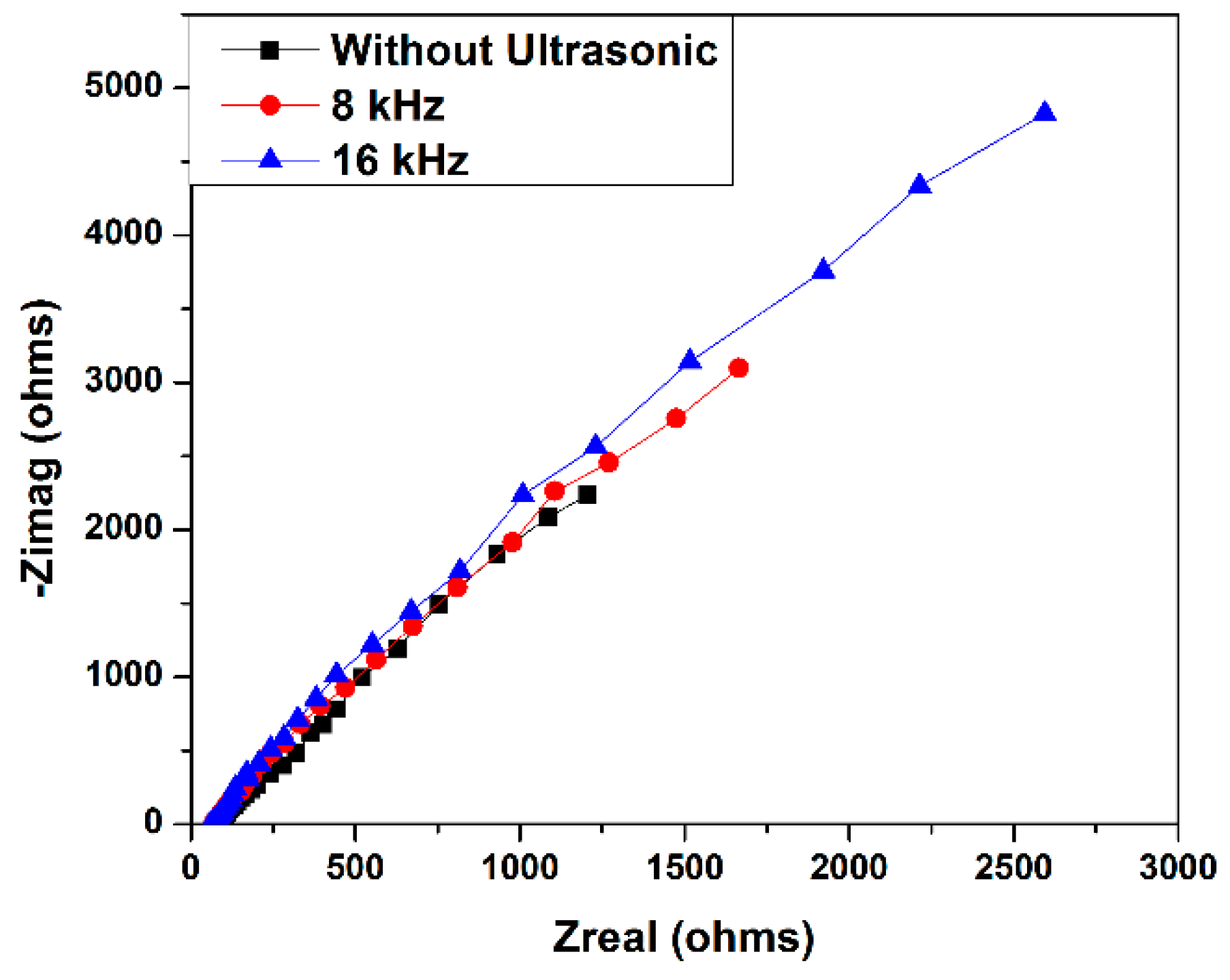
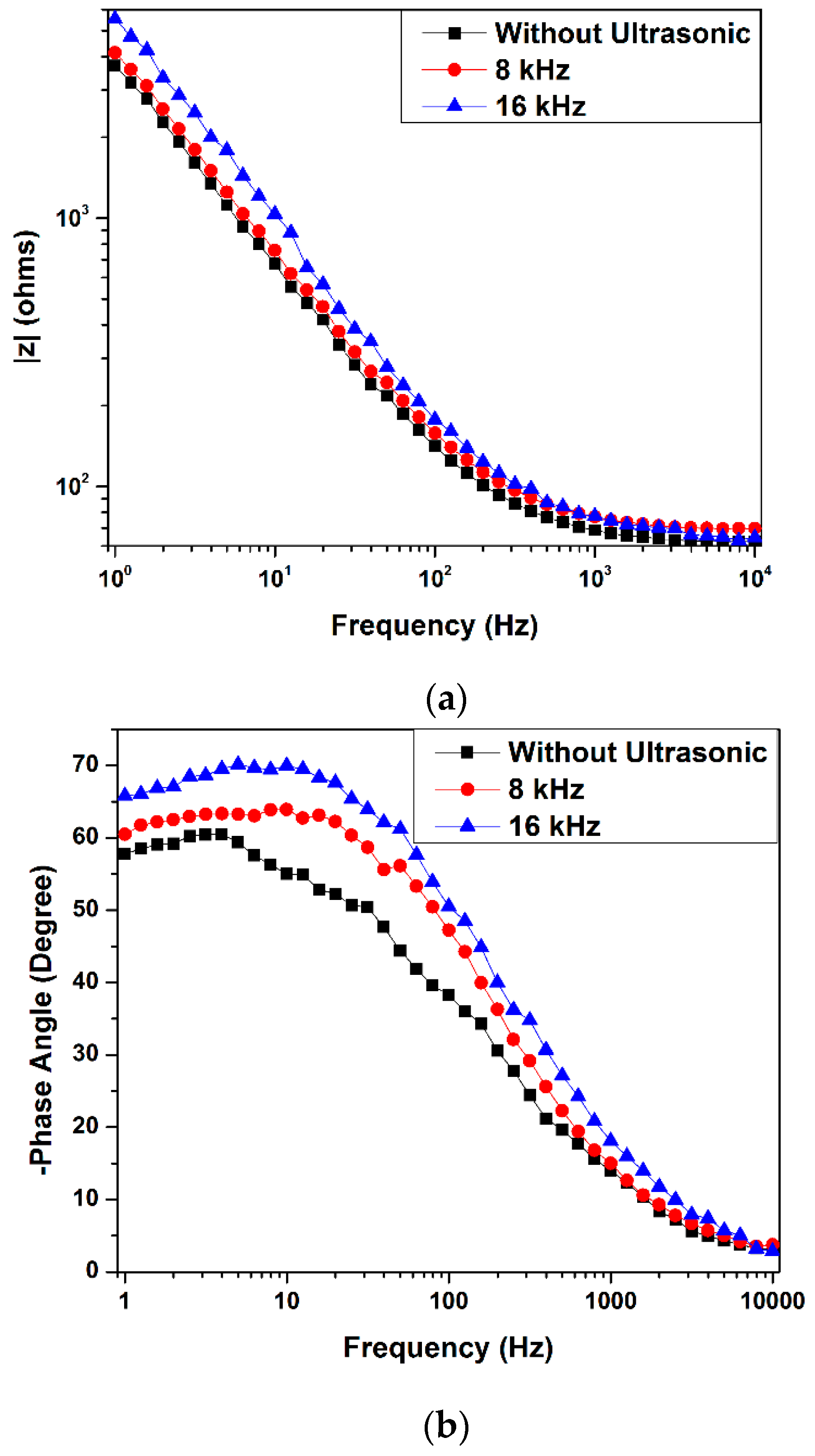
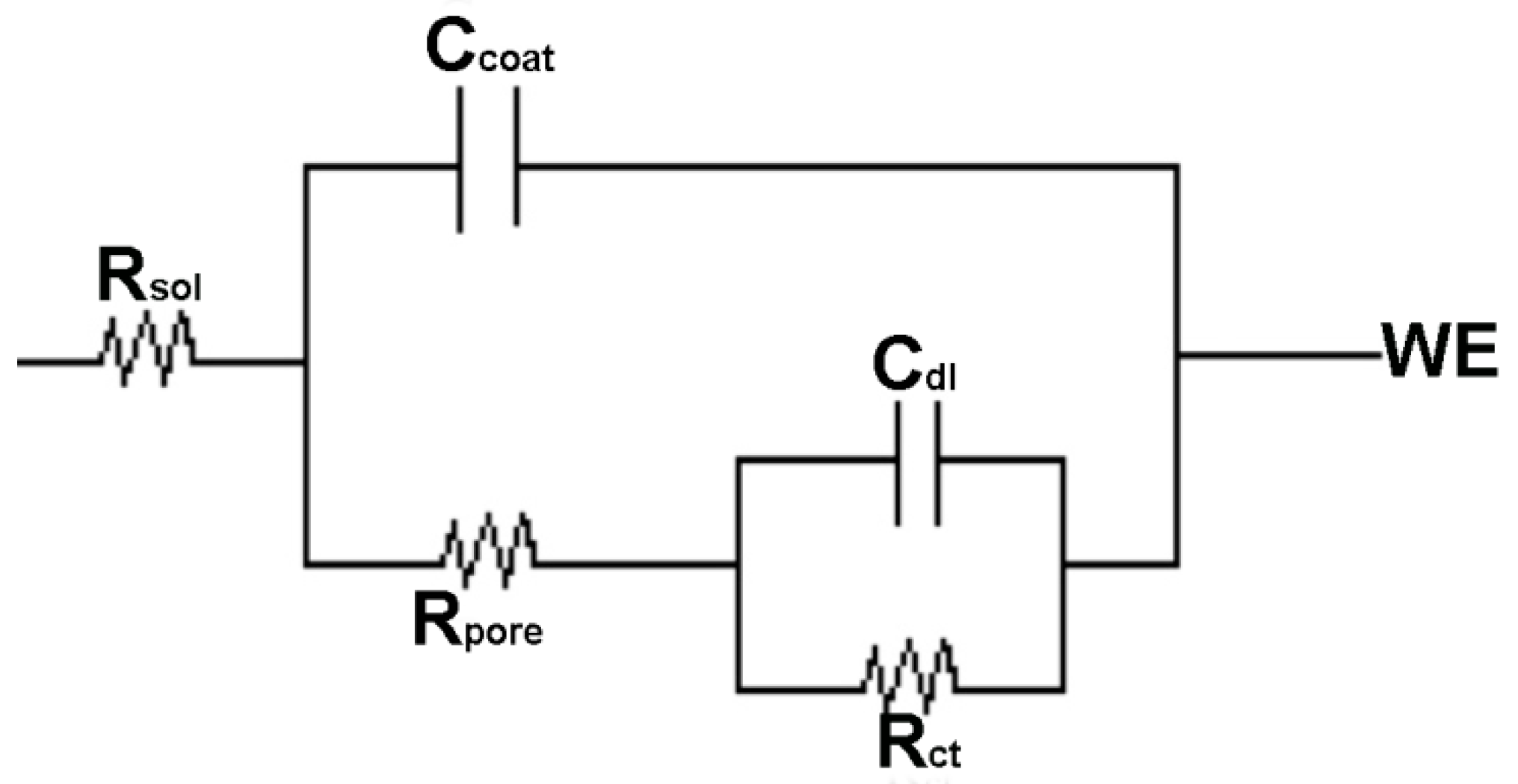
| Samples | Maximum Depth (nm) | Hardness (GPa) | Elastic Modulus, E (GPa) | H3/E2 Ratio |
|---|---|---|---|---|
| Without Ultrasonic | 364.580 | 2.765 | 138.25 | 0.0011 |
| 8 kHz | 286.876 | 4.210 | 165.78 | 0.0027 |
| 16 kHz | 259.524 | 5.511 | 185.21 | 0.0049 |
| Samples | Ecorr (mv) | Icorr (µA/cm2) | Corrosion Rate (mm/Year) | Rct | Cdl |
|---|---|---|---|---|---|
| Without Ultrasonic | −110.11 | 0.971 | 18.6323 × 10−3 | 1883 | 2.7 × 10−5 |
| 8 kHz | 49.07 | 0.261 | 4.9241 × 10−3 | 2816 | 1.73 × 10−5 |
| 16 kHz | −122.07 | 0.185 | 3.7843 × 10−3 | 3766 | 8.8 × 10−6 |
© 2018 by the authors. Licensee MDPI, Basel, Switzerland. This article is an open access article distributed under the terms and conditions of the Creative Commons Attribution (CC BY) license (http://creativecommons.org/licenses/by/4.0/).
Share and Cite
Shah, A.; Izman, S.; Ismail, S.N.F.; Mas Ayu, H.; Che Kob, C.G.; Daud, R.; Abdul Kadir, M.R. The Influence of Ultrasonic Vibration Frequency on the Properties of TiN Coated Biomedical Ti–13Zr–13Nb. Metals 2018, 8, 317. https://doi.org/10.3390/met8050317
Shah A, Izman S, Ismail SNF, Mas Ayu H, Che Kob CG, Daud R, Abdul Kadir MR. The Influence of Ultrasonic Vibration Frequency on the Properties of TiN Coated Biomedical Ti–13Zr–13Nb. Metals. 2018; 8(5):317. https://doi.org/10.3390/met8050317
Chicago/Turabian StyleShah, A., S. Izman, Siti Nurul Fasehah Ismail, H. Mas Ayu, Che Ghani Che Kob, R. Daud, and Mohammed Rafiq Abdul Kadir. 2018. "The Influence of Ultrasonic Vibration Frequency on the Properties of TiN Coated Biomedical Ti–13Zr–13Nb" Metals 8, no. 5: 317. https://doi.org/10.3390/met8050317





